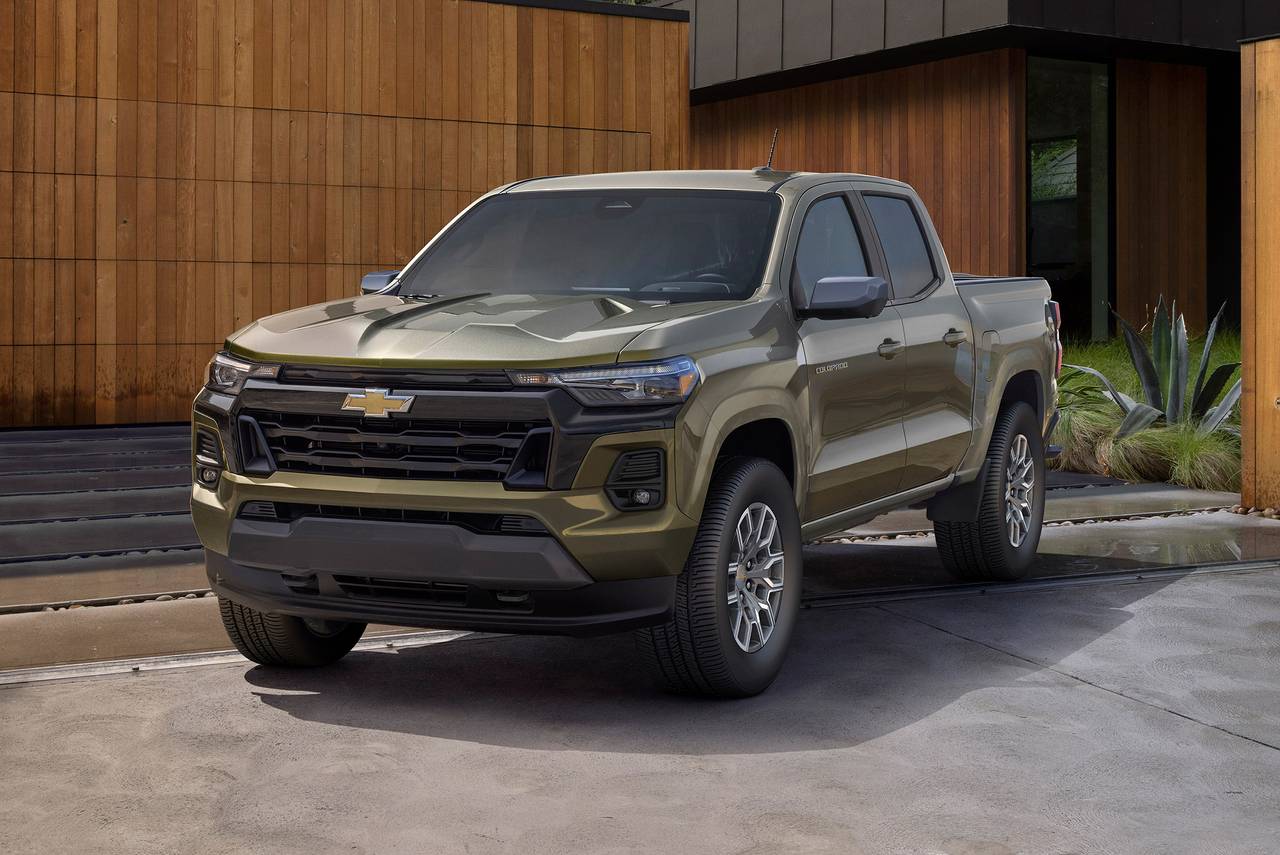Trucks have always held a unique place in the automotive world. They’re not just about getting from point A to point B—they’re about hauling, towing, working, exploring, and, increasingly, making a statement. Whether used as reliable job-site companions or kitted-out weekend warriors, trucks are now deeply integrated into both professional industries and lifestyle culture.
In recent years, trucks have evolved beyond their purely utilitarian roots, blending rugged performance with advanced technology, comfort, and versatility.
This shift has created a broader and more passionate consumer base, but it has also made the financial stakes higher. With prices for new trucks regularly exceeding $50,000—and often much more—it’s more important than ever to understand which models hold their value and which ones don’t.
Depreciation is a harsh reality in the automotive world. Most vehicles begin to lose value the moment they leave the dealership lot. For trucks, though, the situation is more nuanced. Some models, due to their reliability, brand reputation, limited availability, or cult status, defy depreciation trends and actually retain—or even gain—value over time.
Others, despite aggressive marketing or attractive price tags, depreciate rapidly, leaving owners underwater on their loans or disappointed with resale offers.
Understanding the dynamics of truck depreciation isn’t just useful for bargain hunters—it’s essential knowledge for business owners, fleet managers, weekend off-roaders, and anyone looking to make a smart automotive investment.
The reasons trucks depreciate or retain value are varied and complex. A truck’s long-term worth can be influenced by several critical factors: build quality, reliability, brand loyalty, engine durability, aftermarket potential, design timelessness, production numbers, and even cultural impact.
Trucks like the Toyota Tacoma and Ford Raptor have proven themselves over decades to be reliable and desirable, gaining devoted followings that keep demand—and prices—high.
On the other hand, models like the Nissan Titan or Ram 1500 Classic struggle with brand trust, aging platforms, or oversaturated fleet sales that make them far less appealing on the used market. Buyers should look beyond short-term incentives or flashy marketing and dig into the long-term ownership costs—and benefits.
The truck market is especially susceptible to the ebb and flow of value perception because it’s tied so closely to function and identity. A contractor may prioritize towing capacity and durability, while an overlander seeks off-road capability and mod potential.
A suburban family might want a truck that doubles as a daily driver and weekend adventure vehicle. Each of these use cases places different pressures on a truck’s resale value.
Trucks that can flex between roles—or dominate in one without compromise—are usually the ones that stand the test of time and maintain their resale prices better than others. Versatility is valuable. Niche appeal can be gold—if backed by reliability and community support.
It’s also worth noting that trucks are one of the few automotive categories where older models can sometimes outperform newer ones in terms of resale.
First-gen Ford Raptors, manual-transmission Toyota Tacomas, and classic Land Rover Defenders are prime examples of used trucks whose value appreciation has outpaced even luxury cars in certain cases. Scarcity, mechanical simplicity, and timeless design can elevate a truck from “used vehicle” to “desirable asset.”
On the opposite end, mass-produced base trims with limited features or trucks with inconsistent reliability can see their value plummet, often surprisingly fast. Buying the wrong truck may cost you thousands more in the long run than opting for a slightly more expensive, value-retaining alternative upfront.
This article aims to give you a clear-eyed view of five trucks that increase in value and five that plummet, based on long-term market trends, brand reputation, engineering consistency, and enthusiast interest.
These aren’t theoretical guesses—they’re grounded in what consistently happens in the real world: what buyers want, what owners hold onto, and what the used market rewards or punishes.
Whether you’re buying your first truck or your fifteenth, the goal is the same: get the most for your money, both in performance and long-term return. If you care about making a smart investment-or—or at least not throwing money away on a depreciating asset—then knowing which trucks climb and which ones crash is essential.
In the following sections, you’ll find detailed breakdowns of each model, including what drives their value up or down and what buyers typically look for when these trucks hit the used market.
You’ll also see how performance specs, reliability history, trim options, and cultural relevance all play crucial roles in determining which trucks rise and which ones fall. Read on to see where your current truck—or the one you’re considering—lands on the spectrum of smart investments versus costly mistakes.
ALSO READ: 5 Cars With Zero Depreciation Over 5 Years and 5 That Drop Instantly
5 Trucks That Increase in Value
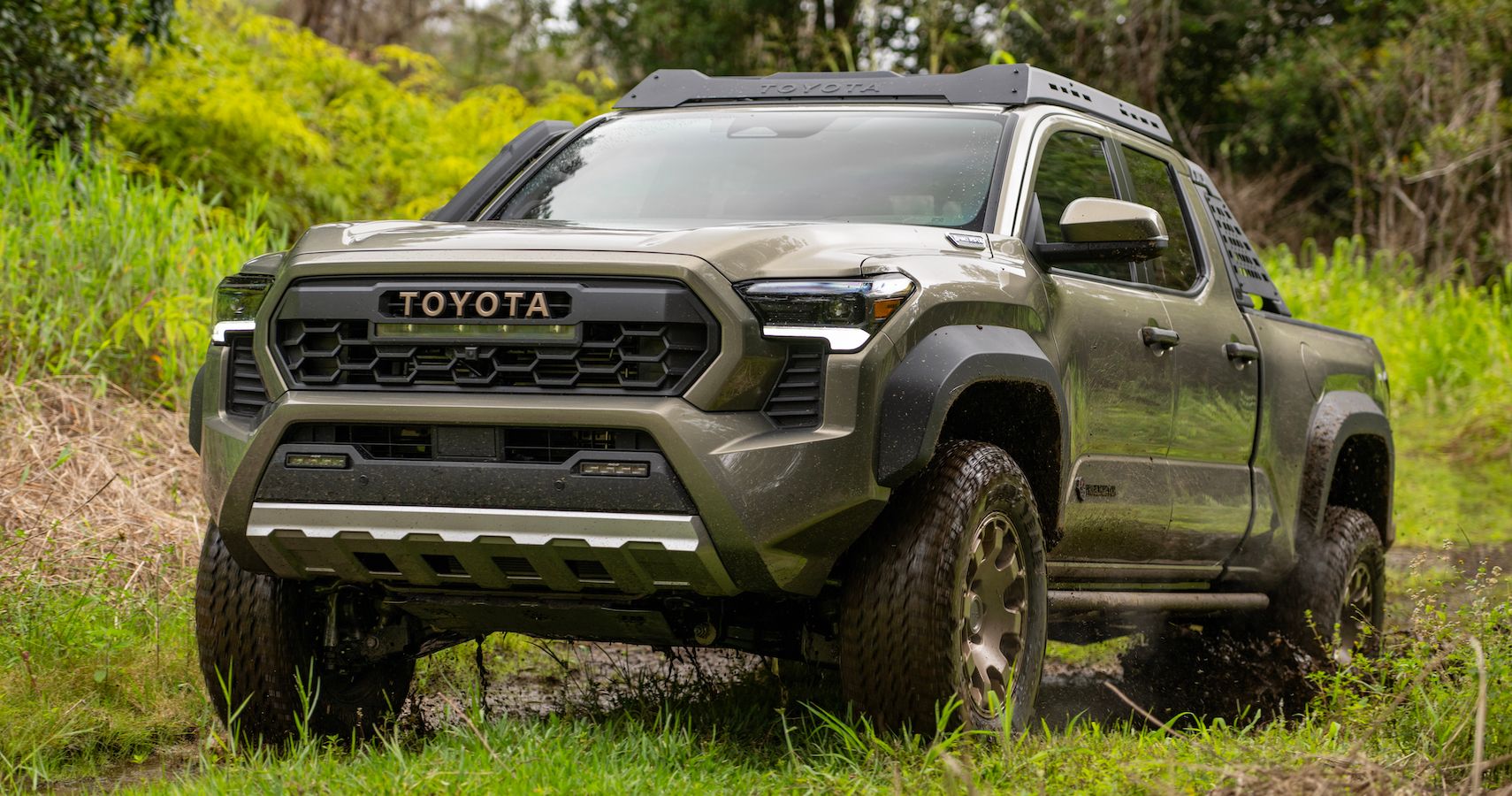
1. Toyota Tacoma
The Toyota Tacoma is arguably the most revered midsize truck on the market, and its staying power is nothing short of legendary. Known for its rugged reliability, off-road capability, and bulletproof engineering, the Tacoma has carved out a niche in both enthusiast and professional circles.
From contractors to campers, off-roaders to urban commuters, the Tacoma’s cross-market appeal has helped solidify its reputation as a value-retaining machine.
Even older models with high mileage often command surprisingly high prices, especially if they’ve been well maintained. The secondary market is flooded with people actively searching for used Tacomas, particularly those built between 2005 and 2015, known for their build quality and iconic styling.
One major factor contributing to the Tacoma’s value is Toyota’s commitment to quality and consistency. Unlike many truck manufacturers that overhaul their models every few years, Toyota follows a more evolutionary approach.
The Tacoma’s engineering philosophy focuses on refining what already works rather than reinventing the wheel. This has led to a platform that is robust, familiar, and easy to maintain.
Owners of older Tacomas often cite their trucks running strong at 200,000 or even 300,000 miles, and parts are readily available and affordable. Reliability breeds confidence in the used market, and confidence drives demand. Buyers are willing to pay a premium for a vehicle that won’t leave them stranded.
Another key component in the Tacoma’s appreciation trajectory is its off-road pedigree. Trims like the TRD Off-Road and TRD Pro have turned the Tacoma into a cult icon among outdoor enthusiasts.
These models offer real off-road hardware, such as crawl control, multi-terrain select, skid plates, and locking differentials—all features that not only enhance the truck’s capabilities but also boost its resale appeal.
The TRD Pro models in particular are often limited in production and are sought after like collector’s items. Even used TRD Pros can sell for close to MSRP, or even over, depending on condition and mileage. That’s a rare achievement in the truck world.
Culturally, the Tacoma has become more than just a utility vehicle—it’s a lifestyle symbol. It represents independence, durability, and adventure. Whether overlanding across the desert, hauling gear in the mountains, or navigating tight urban streets, the Tacoma fits nearly every environment without sacrificing resale value.
Its size also makes it more accessible than full-size pickups, making it popular with first-time buyers and seasoned veterans alike. All these factors converge to make the Tacoma not just a truck you buy and use—but one you invest in and eventually profit from when it’s time to sell.
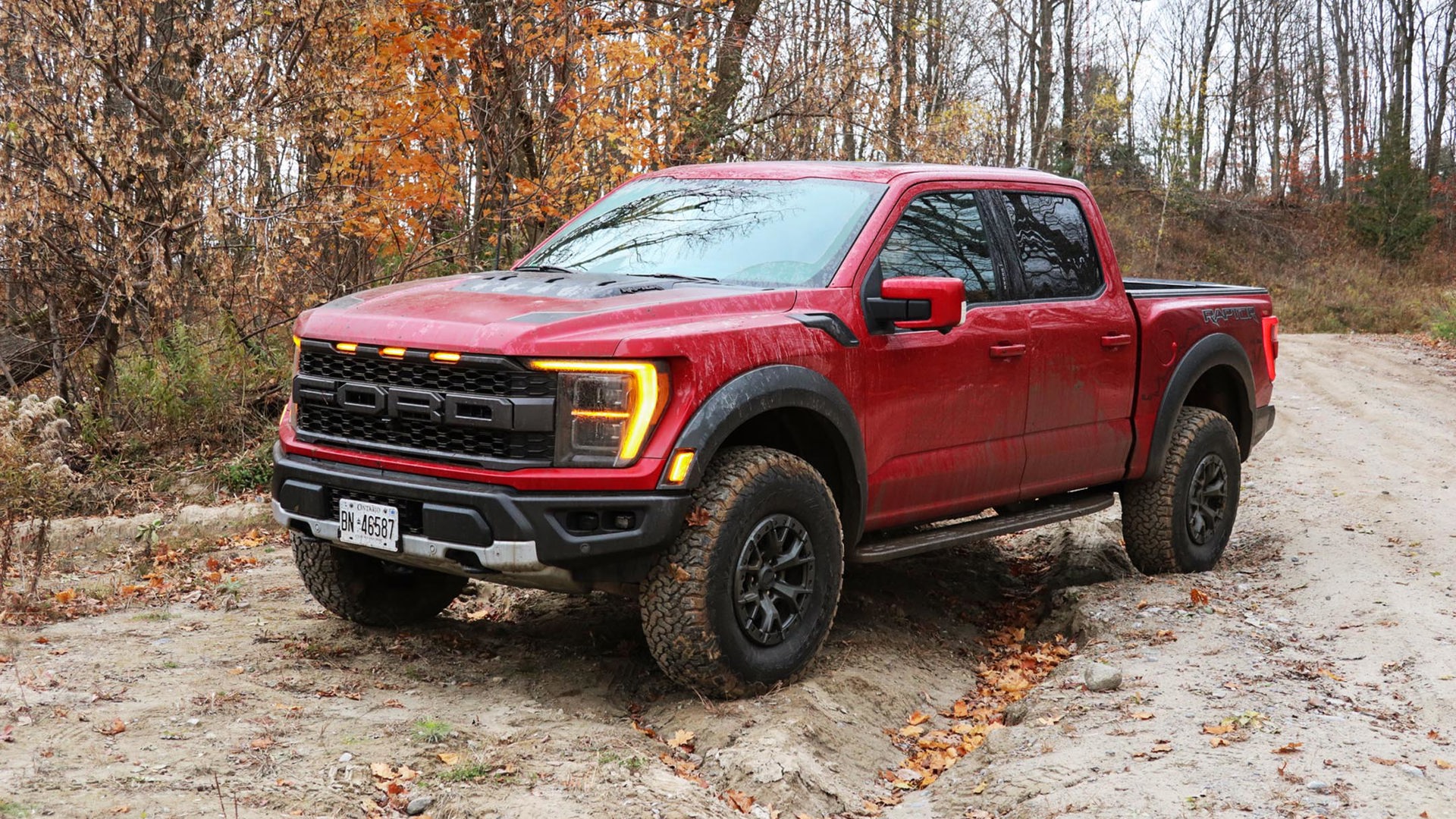
2. Ford F-150 Raptor
The Ford F-150 Raptor is in a class of its own when it comes to high-performance off-road trucks. Born from Ford’s desire to bring Baja racing capability to the showroom floor, the Raptor combines the rugged functionality of a pickup with the excitement and technology of a sports car.
Its wide stance, high-performance Fox shocks, and high-output engines have helped it become one of the most sought-after specialty trucks in North America.
But what really separates the Raptor from other F-150 trims is its outstanding value retention. Thanks to its unique appeal and limited availability, the Raptor holds its price exceptionally well—and in many cases, older models even appreciate, especially first-generation V8 versions.
The Raptor’s enduring value is partly due to its exclusivity and its enthusiast-driven community. First introduced in 2010, the Raptor quickly gained popularity, and the earliest models equipped with the 6.2L V8 have now reached “modern classic” status. These early Raptors are now coveted by collectors and enthusiasts alike, with prices on clean examples rising year after year.
Ford’s decision to move to an EcoBoost V6 in later models caused a split among fans, with many purists clinging to the V8 for its sound and brute force. This division has only fueled the value of earlier models. Additionally, Ford hasn’t flooded the market with Raptors—each generation is built in relatively limited numbers, preserving demand.
The Raptor is also a dream for aftermarket customization. Owners frequently enhance their Raptors with performance parts, off-road lighting, custom bumpers, long-travel suspension kits, and more. Because of the truck’s already rugged and unique base, high-quality modifications often enhance resale value instead of reducing it.
Some owners even document their builds on social media or forums, creating a documented history that can help a Raptor command a premium on the resale market. Buyers in the used market are often willing to pay more for a “turnkey” off-road vehicle that has already been outfitted with desirable upgrades—especially if done professionally.
Furthermore, Ford’s marketing and branding efforts around the Raptor have made it a halo vehicle in the truck world. It’s a truck that garners attention both on and off the road, often regarded as a status symbol in certain circles. It’s not just about the functionality—it’s about the identity the truck provides.
Buyers know this, and it’s one of the reasons they’re willing to pay top dollar for a used one. Whether looking at older V8 Raptors or newer twin-turbo V6 models with advanced technology, these trucks remain highly desirable and are among the rare full-size pickups that not only hold their value but, in the right configuration, grow in worth.
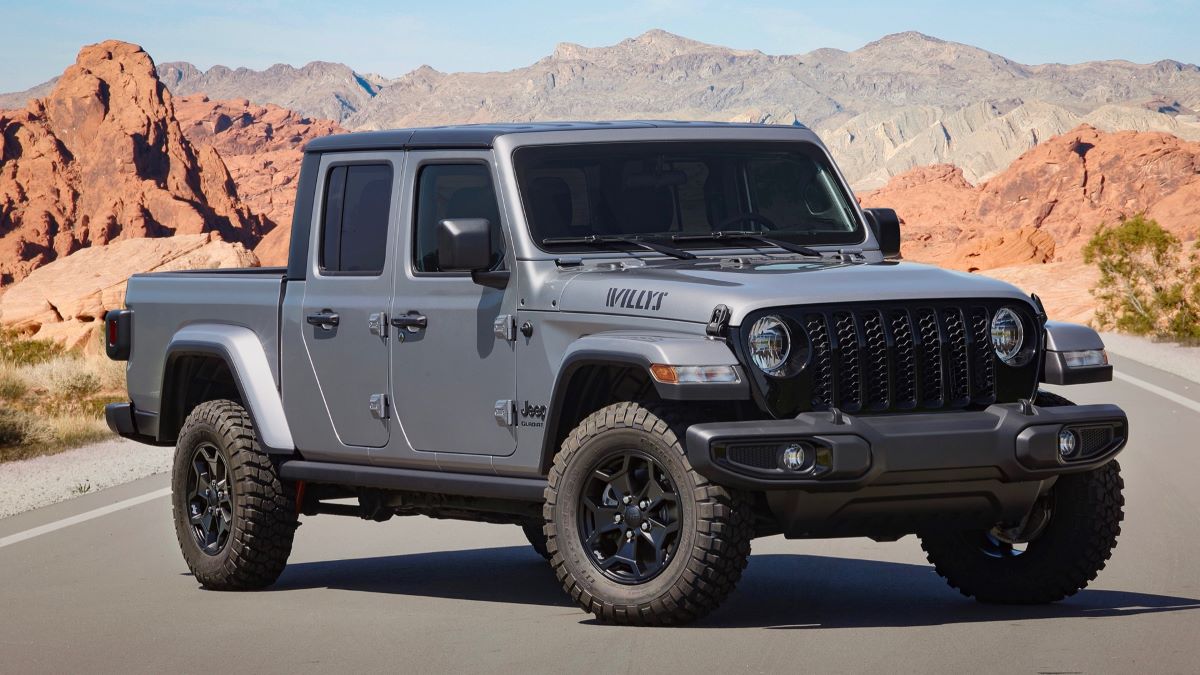
3. Jeep Gladiator
The Jeep Gladiator is a unique case study in how blending two popular vehicle categories—Wrangler and pickup truck—can result in a product that gains value over time. Introduced in 2020, the Gladiator was Jeep’s long-awaited return to the truck market after nearly three decades, and it came with plenty of fanfare.
By retaining much of the Wrangler’s iconic styling and off-road prowess while adding the practicality of a pickup bed, the Gladiator quickly became more than just a novelty—it became a serious contender in the midsize truck market. Despite its relatively recent debut, the Gladiator is already showing signs of strong resale strength.
A major reason for the Gladiator’s value retention is its customization potential. Like its Wrangler sibling, the Gladiator is practically a blank canvas for enthusiasts. Jeep owners have a deep-rooted culture of modifying and personalizing their vehicles, and the Gladiator is no exception.
Lift kits, roof tents, LED lighting, and aftermarket bumpers are commonplace, and these upgrades can significantly increase the resale value of a Gladiator when done with quality parts. Buyers looking for a fully equipped overlanding rig often prefer buying used Gladiators that are already built out, saving themselves time and money while offering sellers a chance to profit.
Beyond customization, the Gladiator benefits from brand heritage and off-road credibility. Jeep is synonymous with adventure, and the Gladiator inherits the mechanical components that make the Wrangler a trail-dominating legend.
With standard 4×4, available Rubicon trim with locking differentials, and high ground clearance, the Gladiator is not just about aesthetics—it’s a legitimate off-road machine.
This makes it popular not only among urban buyers who want a “cool truck,” but also among outdoor adventurers and rural users who need real capability. And because Jeep doesn’t produce Gladiators in overwhelming volumes, supply hasn’t yet diluted its value in the used market.
The Gladiator’s uniqueness as a convertible pickup—removable doors, roof, and windshield—sets it apart from every other truck on the market. It occupies a sweet spot between utilitarian tool and lifestyle accessory.
That alone keeps demand steady and growing. Limited-edition models, like the Mojave (desert-tuned) or High Altitude (luxury-focused), have even more upside in the resale department due to their rarity.
As the Gladiator matures and newer generations arrive, early models—especially those with low mileage and tasteful upgrades—could become future collectibles. Jeep’s carefully curated image and strong brand loyalty ensure that the Gladiator isn’t just another midsize truck—it’s a lifestyle investment that retains and often increases in value.
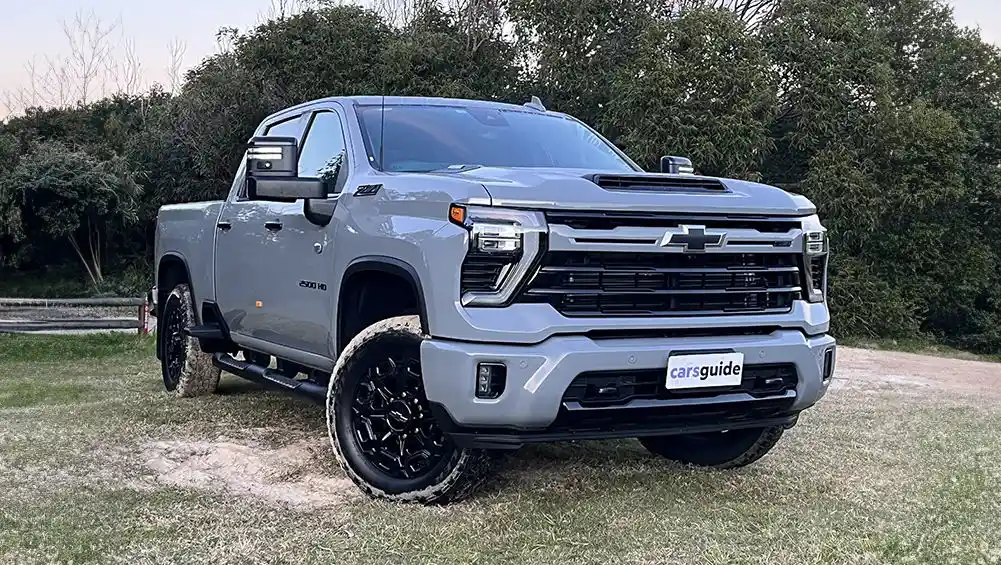
4. Chevrolet Silverado 2500HD (Diesel Models)
Heavy-duty diesel trucks like the Chevrolet Silverado 2500HD hold a special place in the automotive world, especially in terms of value retention. Equipped with the formidable Duramax diesel engine, the 2500HD has long been a favorite among tradespeople, farmers, RV enthusiasts, and anyone who needs serious towing muscle.
While base model half-ton trucks often suffer steep depreciation, HD models like the 2500HD stand out by maintaining strong resale prices—particularly diesel variants, which are often seen as long-term workhorses. These trucks are built to endure grueling work schedules, and that’s precisely what makes them valuable on the secondary market.
The durability of the Silverado 2500HD is unmatched in its class, especially with the Duramax/Allison transmission combo. These trucks are engineered for longevity, capable of towing massive loads over long distances with relative ease.
Many owners report crossing 300,000 miles with routine maintenance, and in some cases, trucks with high mileage still command high resale prices due to the trust placed in their mechanical integrity.
Buyers in rural areas and the trades are especially fond of these trucks, seeing them as tools rather than just vehicles. Unlike light-duty trucks, a Silverado 2500HD isn’t seen as “used up” after 100,000 miles—it’s often just getting started.
Another key factor is the high cost of new heavy-duty trucks. Prices for new diesel 2500HDs can exceed $80,000 when fully loaded, making used models a more attractive option for buyers unwilling to absorb the rapid depreciation that hits in the first two years.
This disparity fuels a strong demand for well-maintained used trucks, particularly ones from recent model years that still offer modern amenities. Additionally, there’s a cultural aspect to owning a diesel HD truck—these vehicles symbolize strength, reliability, and status in certain communities, which further enhances their appeal on the used market.
Customizations also add value when done right. Aftermarket wheels, upgraded suspensions, auxiliary fuel tanks, or even gooseneck hitch installations can make a used 2500HD even more appealing, especially to buyers with specific needs.
Trucks that come with documented service history, minimal rust, and strong frames are often sold within days, sometimes at prices that seem inflated—but to the right buyer, they’re worth every penny.
In a world where work never stops, the Silverado 2500HD stands as a beacon of reliability and financial sense, making it one of the rare full-size trucks that not only retains value but often turns into an appreciating asset.
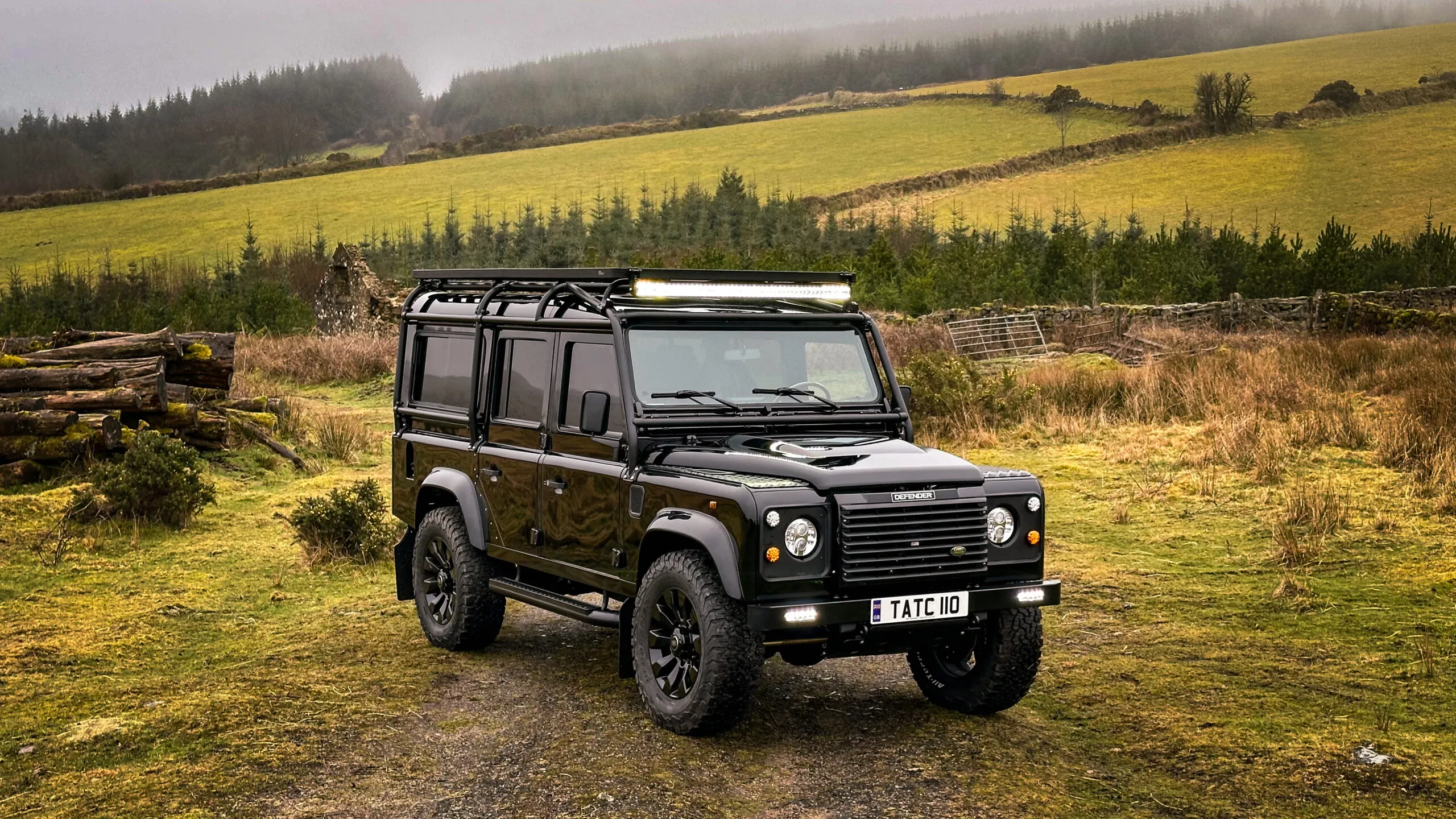
5. Land Rover Defender (Classic Models)
While not a traditional American pickup, the classic Land Rover Defender—particularly the 90 and 110 pickup or utility variants—has become a global icon with skyrocketing resale and collector value.
Originally designed as a no-nonsense workhorse for farms and expeditions, the Defender has evolved into a luxury overlanding and collector item that commands staggering prices in today’s market.
In the U.S., classic Defenders were never sold in large numbers, and only those that meet the 25-year import rule are eligible for registration, making them incredibly rare and desirable. This scarcity, combined with global demand and rugged styling, has turned older Defenders into appreciating automotive assets.
Much of the Defender’s value lies in its uncompromising design. The boxy, riveted aluminum body, exposed hardware, ladder-frame chassis, and no-frills cabin are not remnants of a bygone era—they’re features that collectors love. These trucks are raw, honest, and mechanical in a way that modern vehicles are not.
The driving experience is analog and engaging, offering a sense of connection with the road, or lack thereof, when you’re bouncing across rocks. As the world becomes more digitized and sterile, the Defender offers a throwback to when trucks were tools, not gadgets. This authenticity fuels desirability, especially among collectors and off-road purists.
Imported Defenders that are legally compliant with U.S. regulations can command $60,000 to $150,000, depending on condition, modifications, and provenance. Restored Defenders, particularly those with diesel engines and left-hand-drive configurations, are especially prized.
Specialty shops across the UK and Europe restore these vehicles to better-than-new condition, and the U.S. market eagerly absorbs them. Enthusiasts appreciate the ability to own a piece of global off-road history, while investors see Defenders as appreciating assets that outperform many luxury vehicles in resale value.
Today, the classic Defender is as much a lifestyle statement as it is a utilitarian machine. Whether used as a showpiece, weekend adventure rig, or bespoke overlander, its appeal spans multiple demographics. As newer generations continue to embrace off-grid travel and minimalist living, the Defender’s appeal grows.
It’s more than a truck—it’s a badge of character and purpose. And unlike many collector vehicles that sit in climate-controlled garages, Defenders are still driven, used, and loved. That practical immortality is what makes them not just valuable, but invaluable.
5 Trucks That Plummet in Value
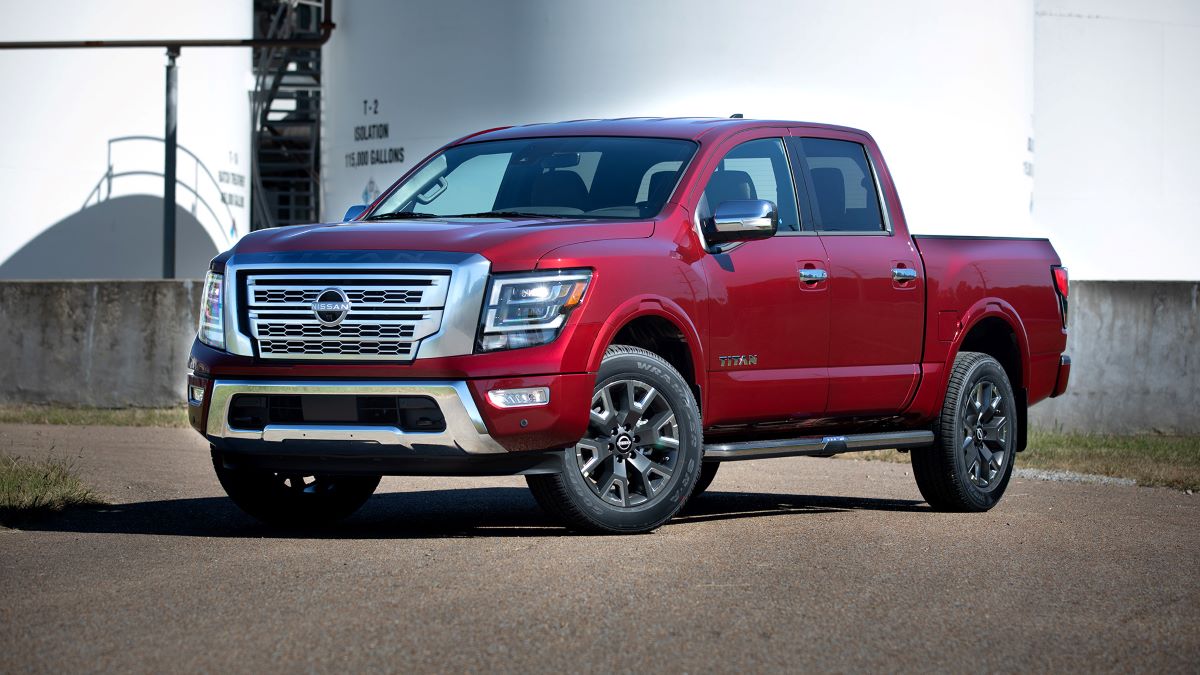
1. Nissan Titan
The Nissan Titan has long struggled to carve out a meaningful space in the competitive full-size pickup segment, and this identity crisis has deeply affected its resale value. Despite being well-built and often offering generous warranties and standard features, the Titan suffers from poor brand recognition in a category dominated by heavyweights like Ford, Chevrolet, and Ram.
As a result, it depreciates rapidly—often losing 30–40% of its value within the first few years. While the Titan might seem like a good deal when buying new due to frequent discounts, this initial savings evaporates when it comes time to sell or trade it in.
A significant contributor to the Titan’s steep depreciation is its lack of differentiation. In a crowded market, the Titan fails to offer a unique selling proposition. It doesn’t lead in towing, fuel economy, technology, or luxury, making it hard for buyers to justify choosing it over its better-known rivals.
Even the optional 5.6L Endurance V8 engine, while powerful, doesn’t stand out in real-world applications. Furthermore, the truck hasn’t had a major redesign in years, and its dated interior and exterior styling turn away potential buyers who expect modern refinement in this price range.
Another key factor is Nissan’s inconsistent support and vision for the Titan line. The company has repeatedly scaled back production, reduced available trims, and even pulled the model from the Canadian market entirely. These moves signal a lack of long-term commitment to the model, which breeds uncertainty in the resale market.
Truck buyers—especially those looking for work-oriented rigs—are hesitant to invest in a vehicle that may be discontinued or phased out, which hurts used sales and further accelerates depreciation. Dealers, too, often undervalue Titans during trade-ins because they know demand on the lot is low.
Moreover, aftermarket and enthusiast support for the Titan is minimal compared to competitors. This limits the truck’s appeal in communities that enjoy modifying or customizing their pickups. You won’t find many Titans in off-road clubs, show circuits, or online truck enthusiast forums.
This lack of community engagement reduces desirability and visibility, which, in turn, affects perceived value. The Nissan Titan may be a mechanically sound truck, but its combination of lukewarm market interest, weak resale performance, and uncertain future makes it one of the fastest-depreciating trucks you can buy.
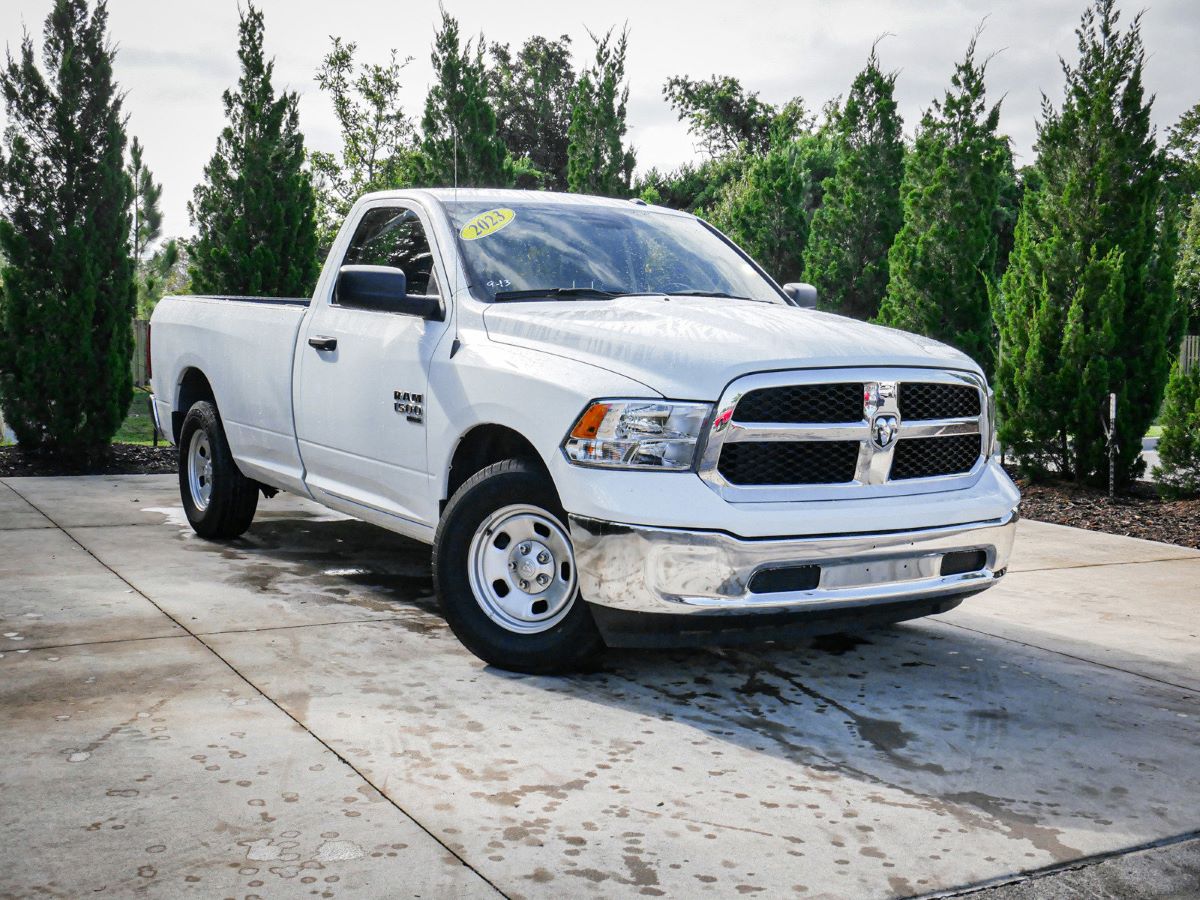
2. Ram 1500 Classic
The Ram 1500 Classic, a budget-minded holdover from Ram’s older generation of pickups, has become synonymous with steep depreciation. Sold alongside the newer, redesigned Ram 1500, the Classic is often pushed with heavy dealer incentives and fleet pricing, which floods the market with inventory.
While it appeals to bargain hunters, this approach comes at a cost—massive depreciation in the first three years of ownership. For private buyers, especially those who paid close to MSRP, the resale reality can be a bitter pill, with values often dropping by over 40% within 36 months.
One of the main reasons the Classic plummets in value is that it’s effectively an outdated truck still in production. Ram kept the previous-generation body style and interior while branding the newer truck as a more upscale, tech-savvy offering. This created a tiered product line where the Classic serves as the “economy” choice.
Unfortunately, used truck buyers often ignore the Classic in favor of the newer-generation Ram, especially since the two models can look similar at a glance but differ drastically in performance, comfort, and technology. This confusion devalues the Classic on the secondary market.
Fleet sales also play a big role in the Classic’s resale issues. The truck is commonly sold to rental companies, municipalities, and construction fleets—buyers who are primarily concerned with upfront cost and basic utility.
When these trucks are cycled out of service and re-enter the used market, they further depress values by increasing supply. These ex-fleet models are often heavily used, minimally equipped, and sold at auction, dragging down the overall market value for all Classic trims—even well-maintained ones owned privately.
To compound matters, the Ram 1500 Classic suffers from middling reliability scores and outdated safety technology. With newer trucks offering advanced driver-assist systems, better crash ratings, and more fuel-efficient powertrains, the Classic feels like a relic from a past era.
While it can be a decent value for someone needing a bare-bones workhorse, it’s a financial liability for anyone expecting long-term value retention. Between its fleet-focused branding, aging platform, and market oversaturation, the Ram 1500 Classic is a classic example of a truck that falls hard in the depreciation game.
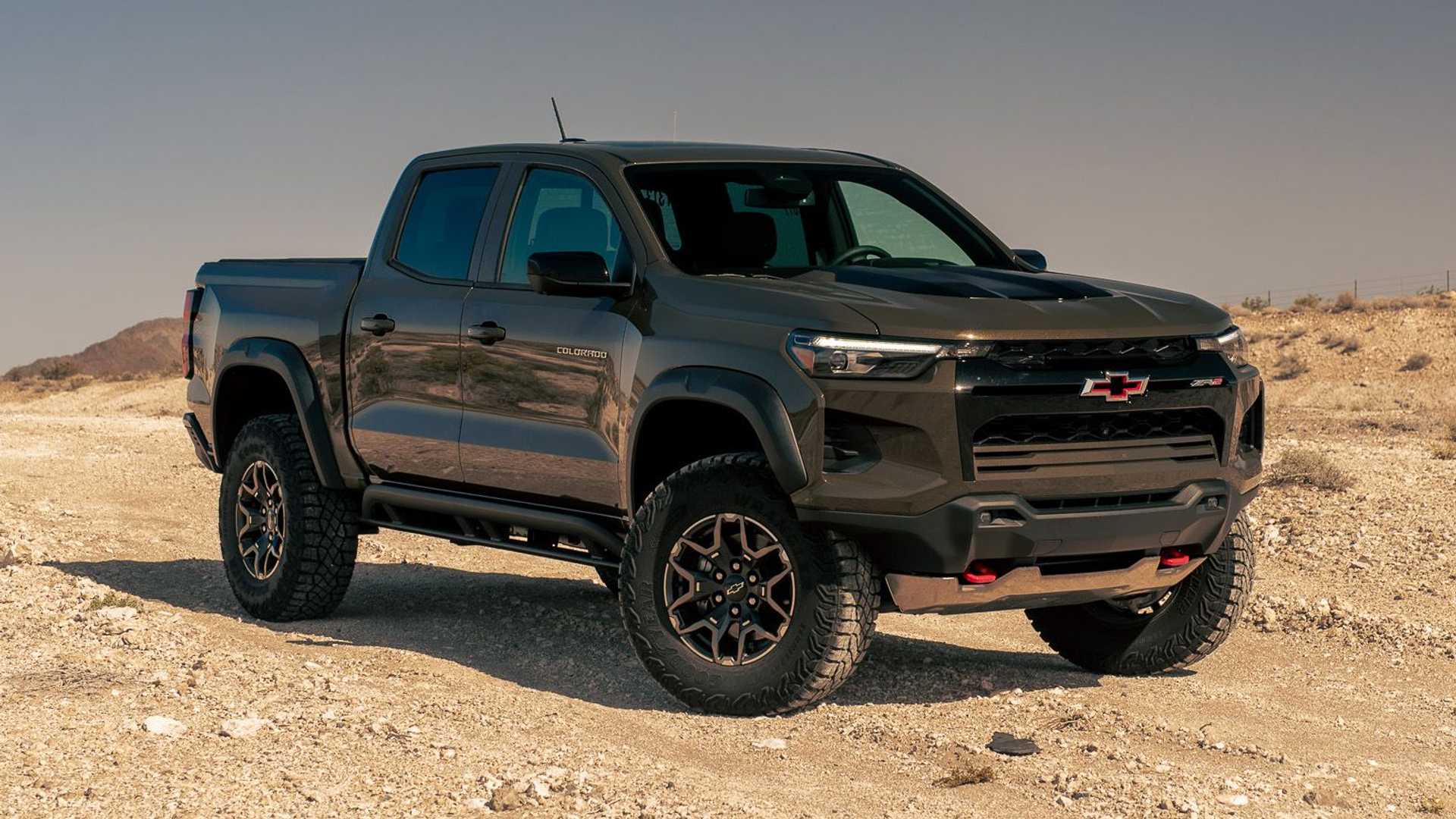
3. Chevrolet Colorado (Base and 2WD Models)
At first glance, the Chevrolet Colorado seems like a solid midsize truck option—especially for buyers who don’t need full-size dimensions or heavy towing capacity. However, base model Colorados, especially those with 2WD and minimal features, suffer dramatically in resale value.
These versions lack the appeal of higher trims like the Z71 or ZR2, which are aimed at off-road and enthusiast markets. Because of their stripped-down nature, entry-level Colorados depreciate quickly, often shedding 35–45% of their value in the first few years.
The biggest issue with low-spec Colorados is that they’re outclassed in almost every measurable category by competitors like the Toyota Tacoma or even the Ford Ranger.
They don’t offer the same reliability track record, aftermarket support, or lifestyle appeal. When buyers enter the used market, they’re often looking for something with a reputation for long-term reliability, and unfortunately, Colorado’s history of transmission issues, electrical quirks, and inconsistent build quality makes it a riskier proposition.
That uncertainty is reflected in trade-in and resale values, especially for base trims that lack modern tech or 4WD capability. Additionally, the used truck market has been flooded with Colorado lease returns and fleet models, particularly in base trims.
These are often used hard and resold cheaply, creating a ceiling on how much even well-maintained Colorados can command. Unlike Tacoma or Gladiator models that have cult followings, the Colorado doesn’t inspire the same loyalty or desirability.
It’s often seen as a placeholder truck—something people settle for rather than aspire to own. This perception further erodes long-term value.
Even within its own model line, the Colorado is highly segmented. Off-road and diesel trims tend to hold their value better, which makes the depreciation of the base and lower-spec trims even more pronounced by comparison.
This contrast becomes evident on dealer lots, where a used ZR2 may still command a premium, but a comparable 2WD Work Truck model might sit for weeks or sell at auction. In a market that increasingly values utility paired with lifestyle branding, the entry-level Colorado simply can’t compete, and its rapid loss in value reflects that harsh reality.
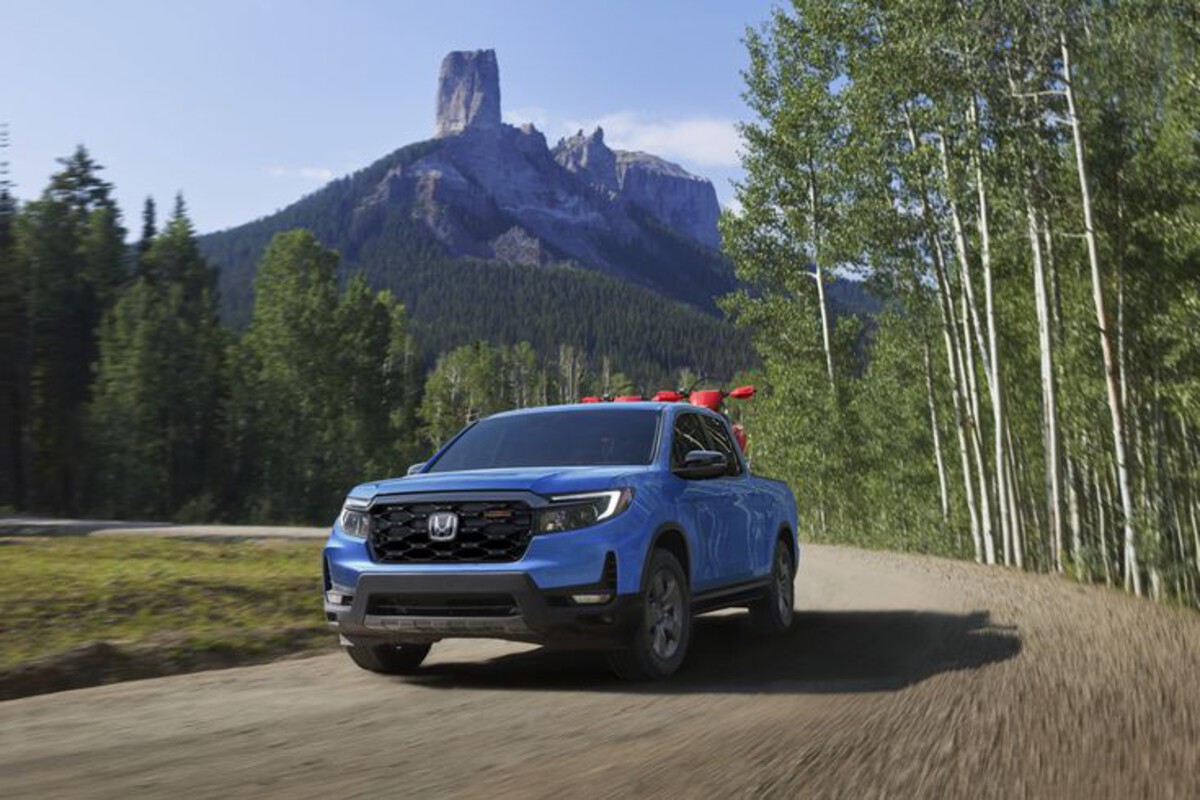
4. Honda Ridgeline
While the Honda Ridgeline often receives praise for its car-like driving dynamics, unibody construction, and practical features, it unfortunately suffers from lackluster resale value, especially among traditional truck buyers. Unlike body-on-frame competitors, the Ridgeline has always occupied a gray area between pickup and crossover.
While this appeals to a small niche, it also alienates the core truck market that places a premium on ruggedness, towing capacity, and off-road performance. As a result, resale value has remained soft, particularly for older models or those without all-wheel drive.
A big reason the Ridgeline depreciates so quickly is because of perception. Despite its innovative features—such as the in-bed trunk and dual-action tailgate—many truck buyers don’t consider the Ridgeline a “real truck.” It lacks a low-range transfer case, has lower ground clearance, and doesn’t have the towing muscle of full-size or even midsize competitors.
This image problem severely limits its resale audience. Buyers looking for a truck want one that can handle tough terrain, pull a trailer, and take a beating. The Ridgeline, though capable for light-duty use, simply doesn’t inspire confidence in those categories.
Moreover, the Ridgeline’s pricing strategy works against it. New models are often priced closer to full-size pickups, despite offering less capability. This makes them a hard sell on the used market, where buyers expect significant savings in exchange for compromises.
If someone can get a lightly used Silverado or F-150 for similar money, the Ridgeline becomes a harder proposition, no matter how comfortable or clever it may be. Even though Honda vehicles generally have good long-term reliability, the Ridgeline’s niche appeal hinders its ability to command strong resale numbers.
Finally, the Ridgeline’s identity crisis has left it without a passionate ownership base. Unlike the Jeep Gladiator or Toyota Tacoma, which enjoy strong aftermarket communities and enthusiast followings, the Ridgeline lacks that emotional connection. Most owners view it as a practical tool rather than a vehicle to customize, showcase, or collect.
As a result, it doesn’t benefit from the same demand inflation seen in trucks with stronger brand engagement. For all its innovation and practicality, the Ridgeline is one of the few Hondas that fails to deliver long-term financial value to its owners.
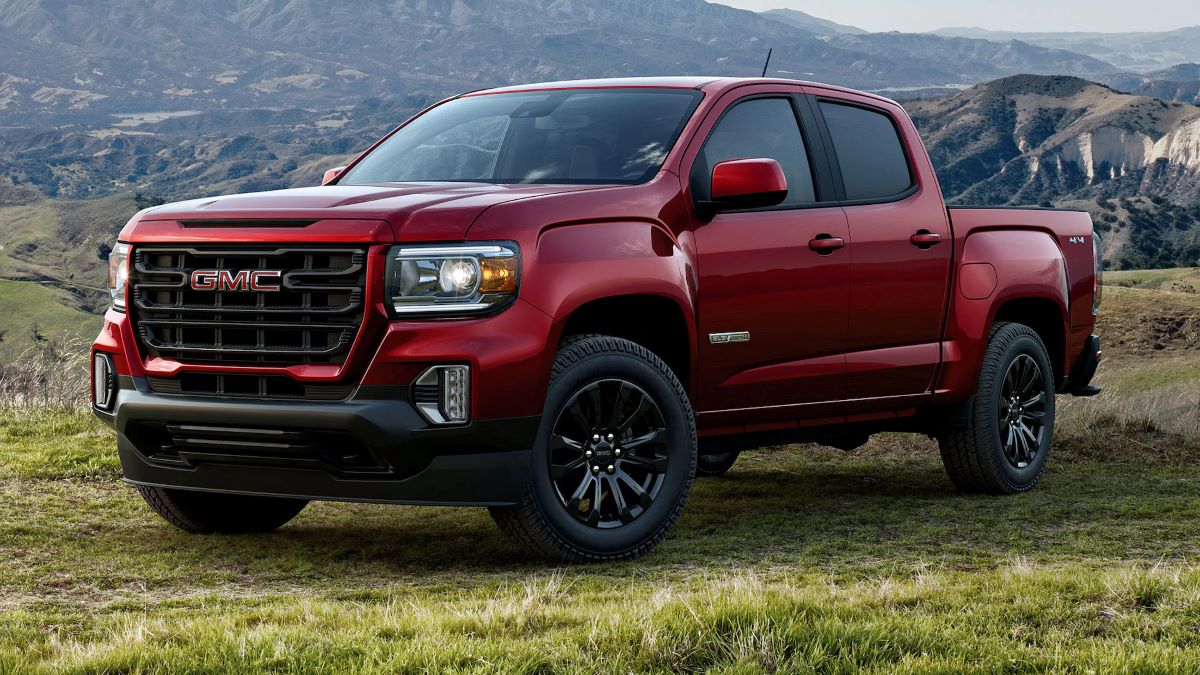
5. GMC Canyon (Non-AT4 and Base Trims)
The GMC Canyon, often marketed as the more premium cousin to the Chevrolet Colorado, shares many of its sibling’s resale challenges—particularly in its base and lower trims. While higher-end versions like the AT4 or Denali trims can hold value reasonably well, the entry-level Canyons struggle to compete in the used market.
Without the off-road capability, luxury features, or strong brand loyalty found in other midsize trucks, the Canyon depreciates rapidly. It’s a truck that’s often forgotten by both the market and the consumer, and that invisibility translates into sharp value loss.
One of the Canyon’s main problems is brand positioning. GMC has long tried to establish itself as a premium offering in the GM truck lineup, but that message doesn’t always translate well in practice—especially for its smaller trucks. The Canyon doesn’t offer enough to distinguish itself from the Colorado, yet it’s often priced higher.
This confusing pricing structure means that buyers expecting luxury features are disappointed, while those seeking value look elsewhere. When these vehicles hit the used market, their appeal narrows further because few buyers are looking specifically for a GMC truck without the bells and whistles.
The Canyon also lacks the rugged reputation needed to stand out in the midsize segment. It doesn’t offer the same off-road cachet as the Tacoma or the Gladiator, and it doesn’t have the lifestyle branding that helps certain trucks retain value. Its design, while competent, is conservative and doesn’t evoke any strong emotional appeal.
This middle-of-the-road image makes it difficult to generate excitement on the resale market. Unlike more iconic trucks, the Canyon rarely shows up on enthusiast forums, overlanding YouTube channels, or social media builds—channels that significantly boost a vehicle’s used value.
Finally, the Canyon has also faced reliability concerns, particularly with earlier models involving electrical systems, transmission performance, and infotainment glitches. While not as severe as in some other GM vehicles, these issues erode buyer confidence.
When combined with limited aftermarket support and a lack of community enthusiasm, the Canyon ends up in a weak position on the secondary market. It’s a perfectly functional truck, but in a resale world driven by passion, reputation, and capability, the GMC Canyon fades into the background, losing value far quicker than many of its rivals.
ALSO READ: 5 Retired Models That Increased in Value and 5 That Didn’t
The landscape of truck ownership and value retention is a fascinating interplay of culture, utility, design, and market dynamics. Through exploring examples of trucks that appreciate in value and others that tend to decline rapidly, several overarching themes and lessons emerge, offering insight into what makes a truck not only a reliable work vehicle but also a potential investment or cherished collectible.
First and foremost, trucks that increase in value often carry a strong emotional and cultural resonance. They embody more than mere transportation—they represent heritage, nostalgia, and the spirit of a particular era. These trucks capture the imagination of enthusiasts through timeless design, historical significance, and stories of durability and ruggedness.
The nostalgia factor cannot be underestimated; as generations look back fondly on vehicles their parents or grandparents once owned, demand rises for models that evoke those memories.
The aesthetics of these trucks—often marked by distinctive lines, unique grille designs, and period-appropriate details—help them stand out, making them objects of desire beyond their utilitarian function.
Additionally, rarity plays a crucial role. Trucks that were produced in limited quantities or special editions naturally become more valuable over time. When supply is scarce and demand increases—whether due to cultural trends, collector interest, or simply the dwindling number of well-preserved examples—prices escalate.
This rarity factor is compounded when trucks possess unique mechanical features or design elements not found in their contemporaries, making them desirable not only to collectors but also to enthusiasts who appreciate their engineering or craftsmanship.
Mechanical simplicity and ease of restoration also greatly influence value appreciation. Trucks that were built with robust, straightforward mechanics often survive the test of time better than those with more complex or fragile components.
This simplicity allows for easier maintenance, repairs, and restoration efforts, making these trucks accessible to a wide range of buyers—from seasoned mechanics to hobbyists looking for a rewarding project.
A strong aftermarket community further supports this dynamic, as the availability of parts, knowledge, and shared expertise helps preserve these vehicles’ longevity and desirability.
Conversely, trucks that tend to plummet in value frequently face challenges related to practicality, market oversaturation, or rapid technological obsolescence. Modern trucks equipped with advanced electronics, while impressive in capability and comfort, often suffer from faster depreciation due to high maintenance costs and the rapid pace of innovation.
Newer models may quickly lose value as improvements in fuel efficiency, emissions standards, and alternative powertrains shift consumer preferences toward the latest technologies.
Mass production and lack of distinguishing features also contribute to rapid depreciation. When a truck model is produced in vast quantities without unique appeal, the market becomes flooded with available units, driving down prices.
Furthermore, trucks heavily used in work settings—especially in harsh environments—often accumulate significant wear and tear, reducing their resale value even if mechanically sound. Buyers looking for trucks for personal use or investment purposes tend to avoid heavily worn work trucks, which exacerbates depreciation.
Another important factor in value trends is brand perception and reputation. Some manufacturers have cultivated a legacy of durability, reliability, and strong resale value, which helps their trucks maintain worth over time. Others may struggle with quality issues or less effective marketing, which can erode consumer confidence and hasten depreciation.
The alignment between brand identity and customer expectations is critical; trucks that embody ruggedness and longevity tend to inspire loyalty, while those perceived as prone to issues or with less cultural cachet often see their values decline.
Environmental and regulatory factors increasingly shape truck value trajectories as well. As governments worldwide tighten emissions standards and promote greener technologies, older trucks with less efficient engines or outdated fuel systems can face restrictions or become costlier to operate.
This reality pressures owners to upgrade or retire their vehicles, pushing down market prices for certain models. Conversely, classic trucks that maintain their appeal in niche markets, such as collectors or off-road enthusiasts, may defy these trends due to their uniqueness and historical importance.
Ultimately, the value of a truck—whether rising or falling—is dictated by a combination of supply and demand influenced by emotional, functional, and economic considerations.
For trucks that appreciate in value, their appeal lies in their blend of cultural significance, rarity, durability, and timeless design. They often serve as more than transportation; they become symbols of identity, history, and craftsmanship, treasured by collectors and enthusiasts willing to invest time and resources to preserve them.
For trucks that lose value rapidly, the story is often about practicality, market saturation, and the relentless march of technological advancement.
These trucks serve important roles, especially in demanding work environments, but their financial value tends to reflect their utilitarian status rather than collectible potential. Rapid innovation, brand challenges, and changing consumer preferences further accelerate depreciation.
For anyone interested in trucks—whether as buyers, sellers, collectors, or investors—the key takeaway is to understand what drives value beyond the sticker price or initial utility. Emotional connections, cultural relevance, rarity, mechanical soundness, and market trends all play vital roles.
Appreciated trucks offer not only potential financial rewards but also a chance to own a piece of automotive history that resonates with personal or collective identity. Those that depreciate rapidly, while perhaps less glamorous, remind us of the practical realities of transportation and the evolving needs of the market.
In a world where trucks continue to evolve rapidly—embracing electrification, autonomy, and new materials—the lessons from past value trends remain invaluable.
They guide enthusiasts and investors in making informed decisions about which trucks to cherish and preserve and which to approach with caution.
Whether your interest lies in nostalgic restoration or pragmatic ownership, understanding the factors behind value appreciation and depreciation will help you navigate the complex and ever-changing landscape of truck ownership with confidence.

